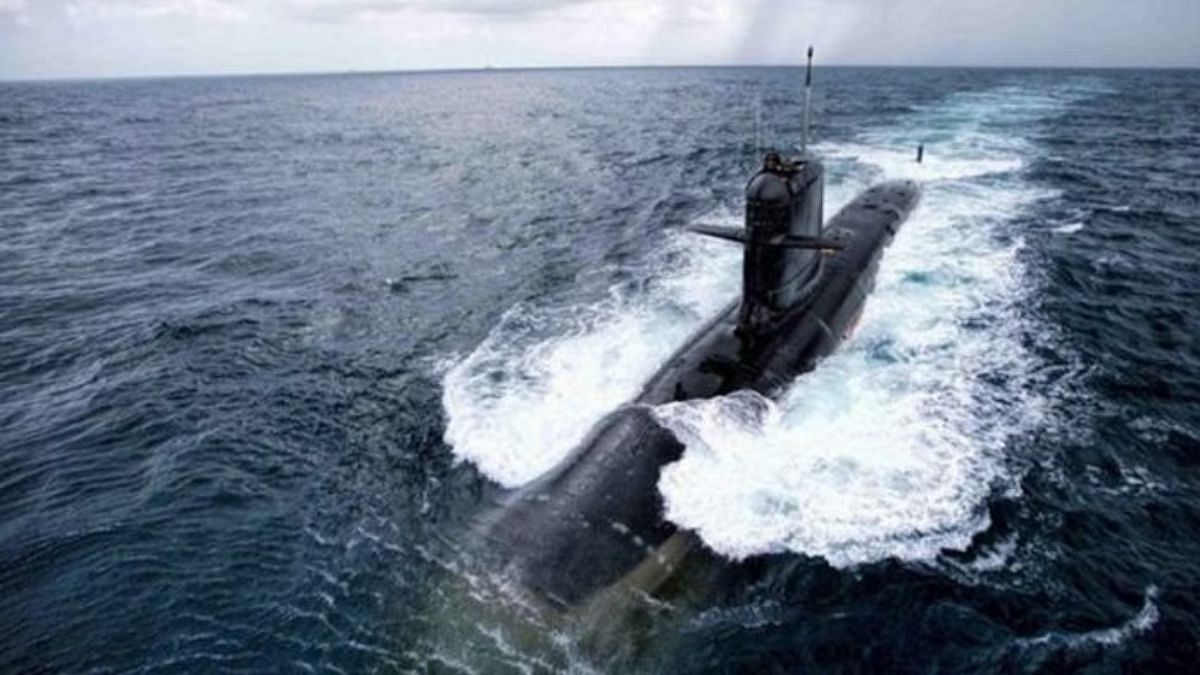New Delhi: An Indian Navy team is currently in Germany to conduct a field inspection of the Air Independent Propulsion System (AIP), being offered by the country for India’s next big submarine programme — Project 75 (India) or P75I — ThePrint has learnt.
Sources in the defence and security establishment said the team reached Germany last week and was in the process of evaluating the AIP system that will allow a vessel to stay underwater for a longer time.
They will look into the efficiency claims of the German submarine maker ThyssenKrupp Marine Systems (TKMS), which is the frontrunner to bag the mega contract.
Sources also said that once this trip was completed, the team would also travel to Spain to check the AIP system of Spanish submarine manufacturer Navantia, the other foreign contender for the Navy deal.
The Navy has insisted on a proven AIP system for the next generation of submarines that is to be built under P75I, a plan formulated 24 years ago in 2000.
While the French have already built six Scorpene class submarines for India, they don’t have a demonstrated AIP system.
As per the plan, the Scorpene submarine will be equipped with the indigenous AIP system being developed by the Defence Research and Development Organisation (DRDO).
Even this indigenous development is behind schedule. The last two of the Scorpene-class submarines were to be fitted with the indigenous AIP technology at the building stage itself, but the delay means the plan has to be tweaked to ensure AIP fitment during the refit stage.
However, this is also not sure because the first of the Scorpene class INS Kalvari, which was commissioned in 2017, is scheduled to come in for refit in the middle of this year — the system is still not fully ready.
“A proven AIP is very important for the Navy because the force cannot afford to have the entire programme delayed further, whether this is because of slow development of indigenous systems or by a foreign company claiming they have developed it but not yet proven it. The Indian submarine programme cannot be a test bed for anyone,” a source said.
Because the P75I programme has been delayed, the Navy has gone in for stop gap arrangement by deciding to go in for three additional Scorpene submarines that were being pushed by the French.
However, the formal cost negotiation process is yet to start even though the programme was cleared last year.
Germany, Spain push for G2G deal
Both the German and the Spanish governments are pushing for a government-to-government deal for the P75I programme just like Narendra Modi did in 2016 for the 36 Rafale fighters.
TKMS has tied up with India’s state-run Mazagon Dock Shipbuilders Limited (MDL) for the project while Navantia has tied up with private company L&T.
The project is being pursued under a strategic partnership — to be built in India through a collaboration between a foreign original equipment manufacturer (OEM) and an Indian entity.
It remained in limbo over the past few years because multiple foreign companies had chosen to stay away, including the Germans.
The OEMs originally in contention besides TKMS and Navantia were Russia’s Rosoboronexport Rubin Design Bureau, France’s Naval Group, South Korea’s Daewoo Shipbuilding & Marine Engineering and Swedish firm SAAB.
SAAB was the first to exit from the race in 2019, even before a formal tender was issued, citing “unbalance” in the strategic partnership.
The Russians also expressed their inability to be part of the project, saying they are willing to go in for a government-to-government deal for the joint design and manufacturing of submarines.
The Russians are believed to have also offered six new improved Kilo class submarines to India, deliveries of which it said would be fast tracked, but the Indian Navy was not so keen.
France expressed its inability to participate in the project because they did not have the proven AIP.
However, Germany had initially been reluctant, as they felt the strategic partnership was skewed in favour of the Indian entity, which would have the majority share in the joint venture. On the other hand, the OEM was to be responsible for delivery and even shortfalls.
Germany relented only after several meetings with the Navy.
Such was the poor response to the first tender (request for proposal) issued in 2021 that the Navy had to twice extend the deadline.
Also read: India- US conduct joint naval exercise, Tiger Triumph 2024 to enhance HADR operations
Project 76
Another proposal in the works is Project 76.
While India has managed to design and build its own nuclear submarine with help from the Russians, the country has never designed or manufactured a conventional submarine.
The Naval Design Bureau is working on a conventional diesel-electric submarine with AIP technology that will be the future of India’s submarine plans.
It will be an in-house project and the Navy is already focusing on systems and technology the submarine will have and designing the vessel around that.
(Edited by Tikli Basu)
Also read: Why Navy plan to fit Scorpene subs with made-in-India propulsion tech won’t materialise before 2024




